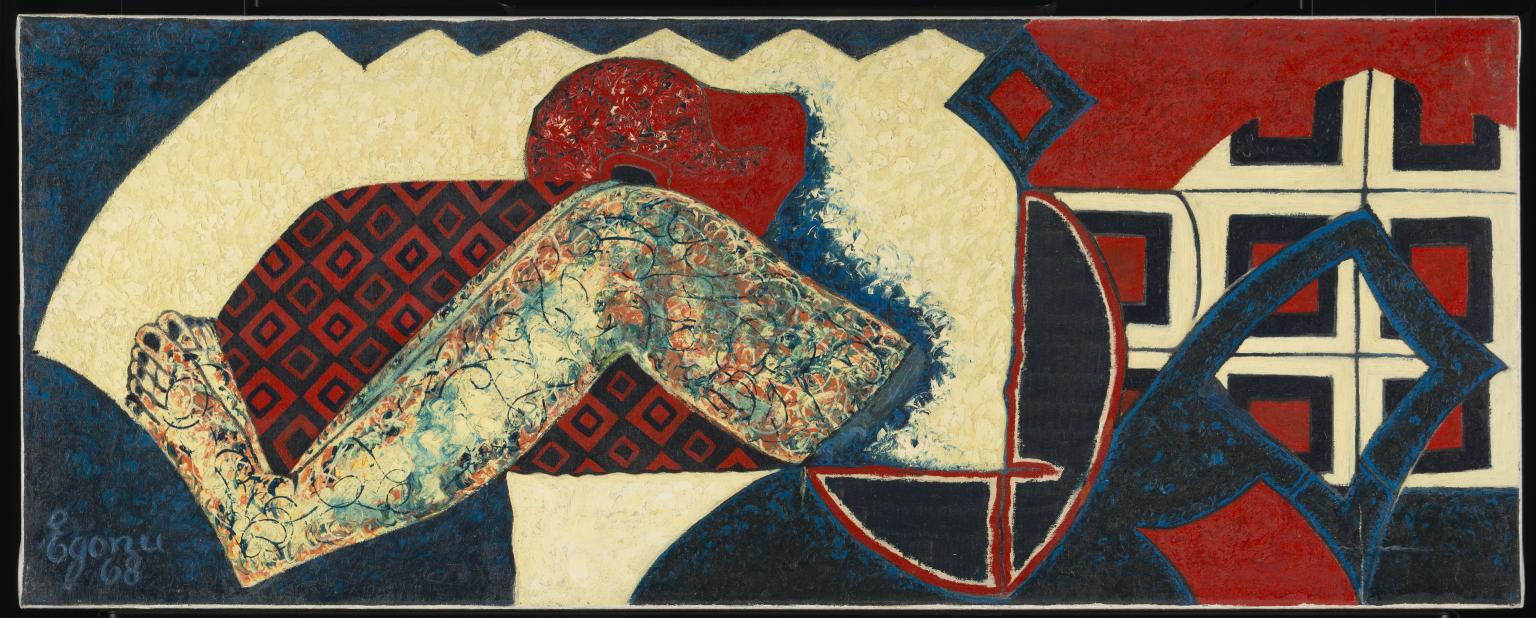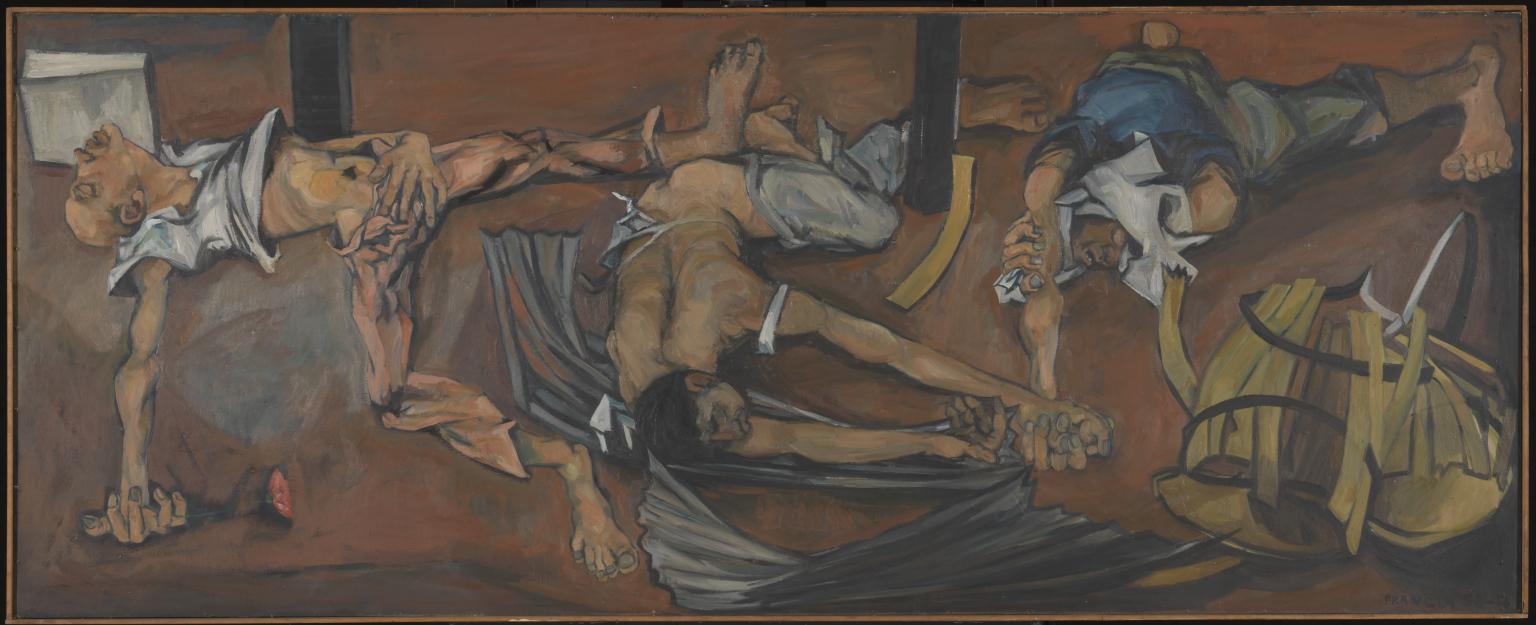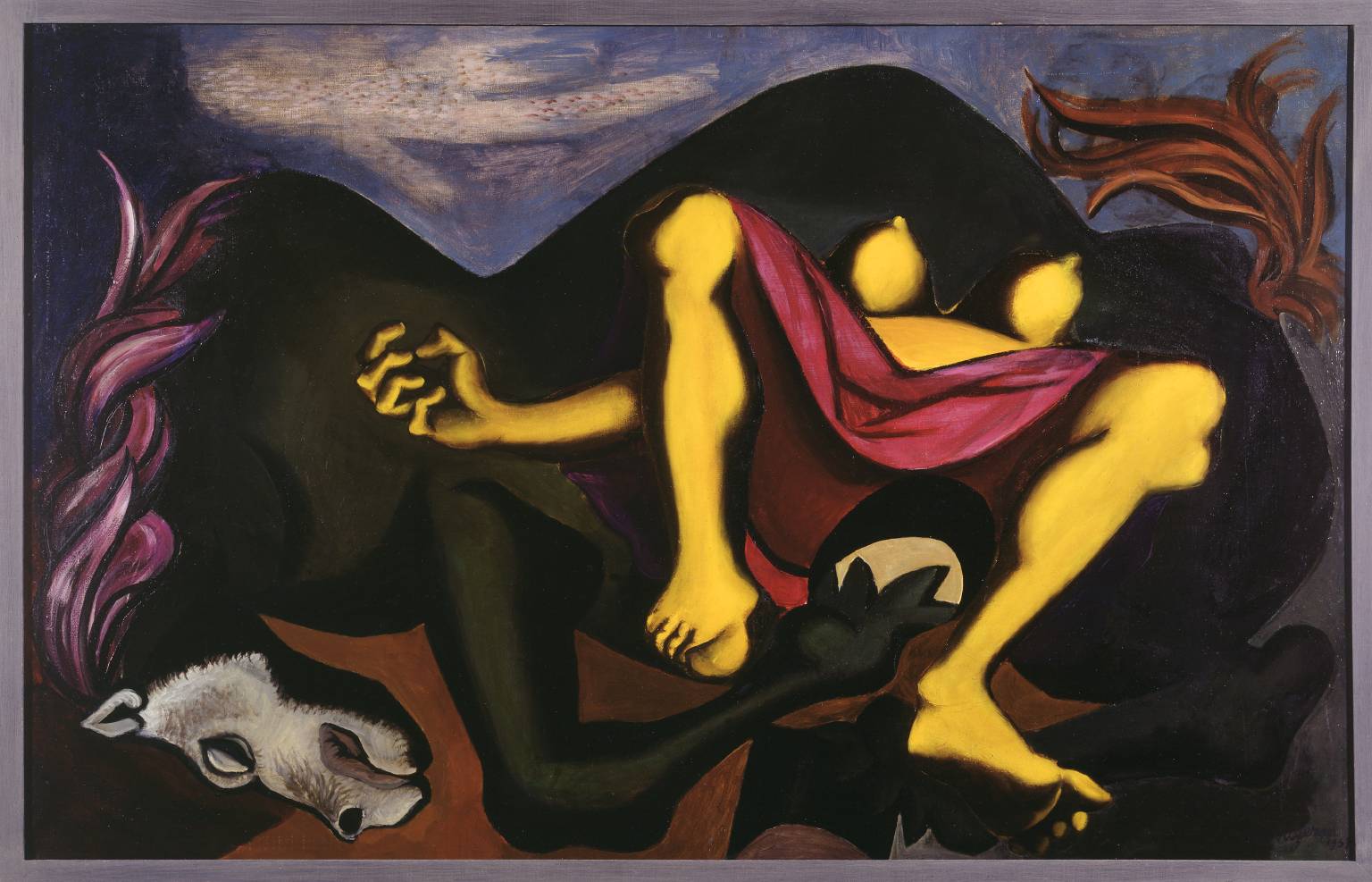12 rooms in Artist and Society
The works in this room find visual expression for the complex horrors of civil war
In times of war, art has long been a means of protesting against suffering and also of remembering the dead. The twentieth century was marked by a number of civil wars that set neighbours and families against one another. The Spanish Civil War of 1936–9 had a particularly powerful impact in Europe and the wider Spanish- speaking world to which exiles fled.
Mexican artist David Alfaro Siqueiros turned to abstraction to articulate his despair at the outbreak of the Spanish Civil War. By contrast, Peter de Francia’s The Execution of Beloyannis 1953–4 is rooted in realism but powerfully expressive, depicting a brutal killing in the aftermath of the Greek Civil War.
The process of decolonisation in the second half of the century was rarely peaceful and often marked by especial bitterness. Malangatana Ngwenya’s dense weave of images evokes his experience during the war of liberation from Portuguese rule in Mozambique. In the face of inhumanity, artists can bear witness and commemorate, bringing painful issues to the surface, both personally and publicly.
Curated by Matthew Gale
Art in this room





